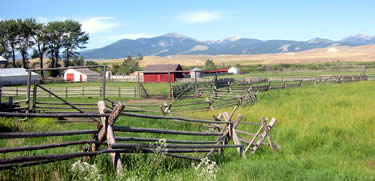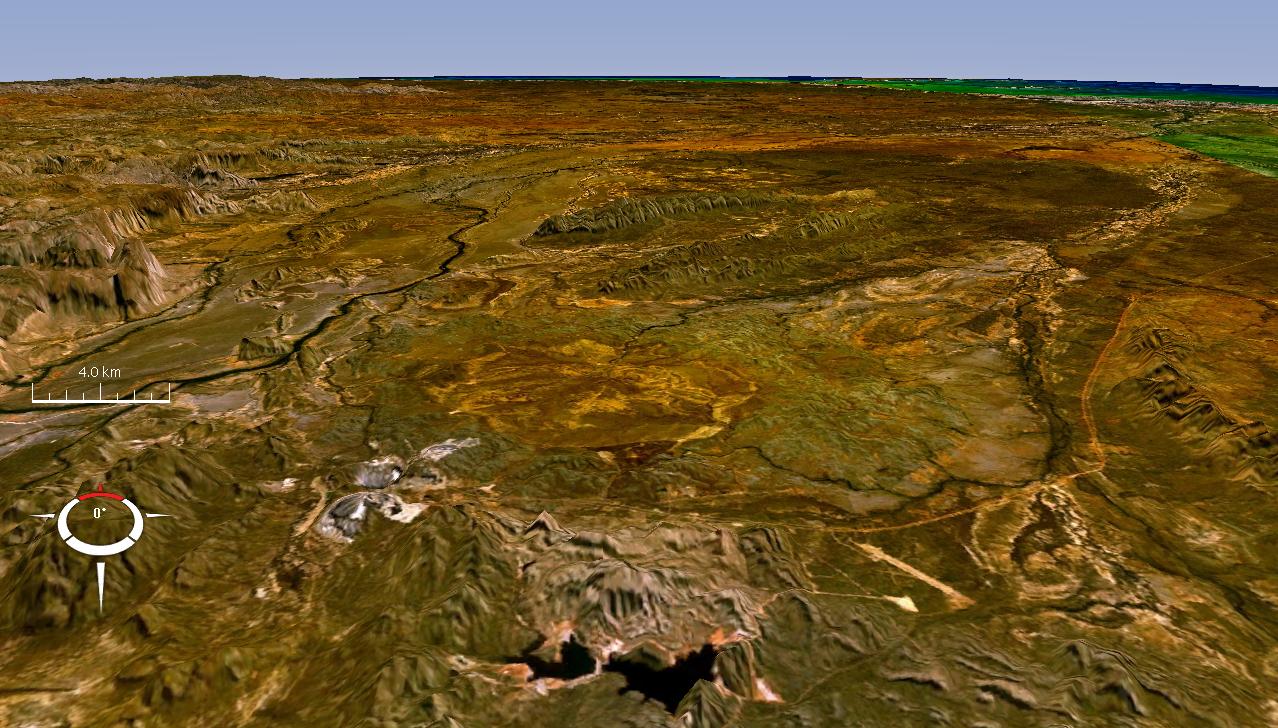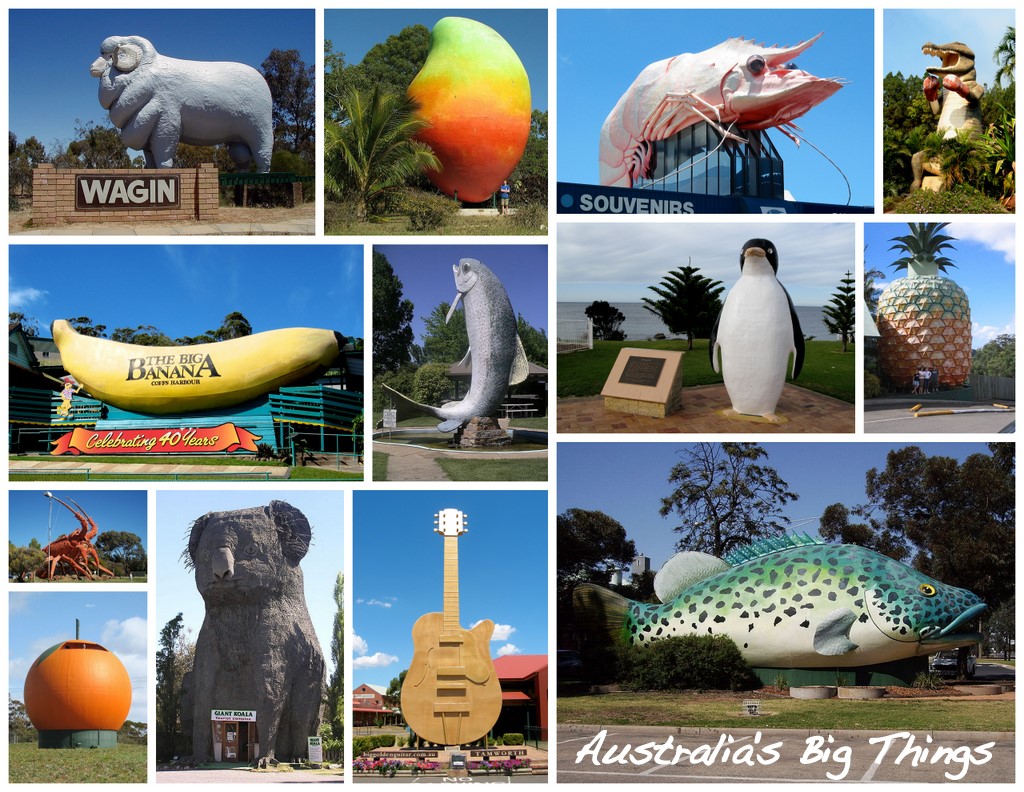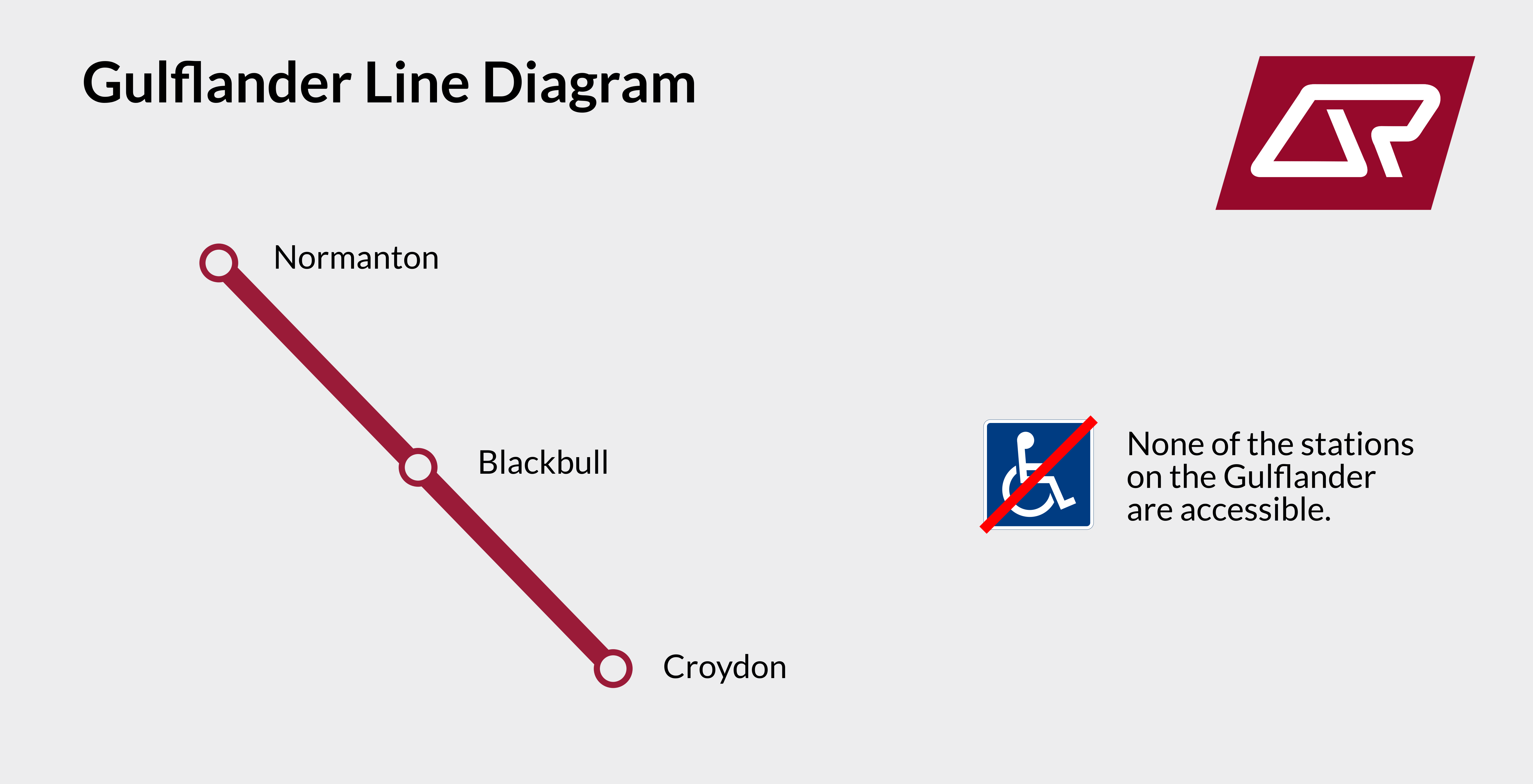|
Normanton, Queensland
Normanton is an outback town and coastal Suburbs and localities (Australia), locality in the Shire of Carpentaria, Queensland, Australia. At the , the locality of Normanton had a population of 1,391 people, and the town of Normanton had a population of 1,326 people. It is the administrative centre of the Shire of Carpentaria. It has a tropical savanna climate and the main economy of the locality is cattle grazing. The town is one terminus of the isolated Normanton to Croydon railway line, which was built during Western Australian gold rushes, gold rush days in the 1890s. The Gulflander passenger train operates once a week along the railway line. Two of Australia's big things are in Normanton: the "Big Barramundi" and "Krys, the Savannah King" (a saltwater crocodile). There are also many heritage-listed sites, reflecting Normanton's history. In the , the locality of Normanton had a population of 1,391 people. Geography Normanton is in the Gulf Country region of northwest Que ... [...More Info...] [...Related Items...] OR: [Wikipedia] [Google] [Baidu] |
AEST
Australia uses three main time zones: Australian Eastern Standard Time (AEST; UTC+10:00), Australian Central Standard Time (ACST; UTC+09:30) and Australian Western Standard Time (AWST; UTC+08:00). Time is regulated by the individual states and territories of Australia, state governments, some of which observe daylight saving time (DST). Daylight saving time (+1 hour) is used between the first Sunday in October and the first Sunday in April in jurisdictions in the south and south-east: * New South Wales, Victoria, Australia, Victoria, Tasmania, Jervis Bay Territory and the Australian Capital Territory switches to the Australian Eastern Daylight Saving Time (AEDT; UTC+11:00), and * South Australia switches to the Australian Central Daylight Saving Time (ACDT; UTC+10:30). Standard time was introduced in the 1890s when all of the Australian colonies adopted it. Before the switch to standard time zones, each local city or town was free to determine its local time, called local mea ... [...More Info...] [...Related Items...] OR: [Wikipedia] [Google] [Baidu] |
Suburbs And Localities (Australia)
Suburbs and localities are the names of geographic subdivisions in Australia, used mainly for address purposes. The term locality is used in rural areas, while the term suburb is used in urban areas. Postcodes in Australia, Australian postcodes closely align with the boundaries of localities and suburbs. This Australian usage of the term "suburb" differs from common American and British usage of suburb (municipality outside of a big city). The Australian usage is closer to the American or British use of "neighbourhood" or "district", and can be used to refer to any portion of a city. Unlike the use in British or American English, this term can include inner-city, outer-metropolitan and industrial areas. Localities existed in the past as informal units, but in 1996 the Intergovernmental Committee on Surveying and Mapping and the Committee for Geographical Names in Australasia (CGNA) decided to name and establish official boundaries for all localities and suburbs. There has sub ... [...More Info...] [...Related Items...] OR: [Wikipedia] [Google] [Baidu] |
Bang Bang Jump Up
Bang Bang Jump Up is a solitary jump up in Stokes, Shire of Carpentaria, Queensland, Australia. Geography Bang Bang Jump Up is 106 km southwest of Normanton on the Burke Developmental Road, where the terrain rises abruptly from 20 metres above sea level to 50 metres above sea level after many kilometres of flat terrain. This jump up is one of the few elevated areas located in the middle of an expansive flat grassland. References External links Map of Bang Bang Jump Up North West Queensland Shire of Carpentaria Mountains of Queensland {{Queensland-geo-stub ... [...More Info...] [...Related Items...] OR: [Wikipedia] [Google] [Baidu] |
Cattle Farming
A ranch (from /Mexican Spanish) is an area of land, including various structures, given primarily to ranching, the practice of raising grazing livestock such as cattle and sheep. It is a subtype of farm. These terms are most often applied to livestock-raising operations in Mexico, the Western United States and Western Canada, though there are ranches in other areas.For terminologies in Australia and New Zealand, see Station (Australian agriculture) and Station (New Zealand agriculture). People who own or operate a ranch are called ranchers, cattlemen, or stockgrowers. Ranching is also a method used to raise less common livestock such as horses, elk, American bison, ostrich, emu, and alpaca.Holechek, J.L., Geli, H.M., Cibils, A.F. and Sawalhah, M.N., 2020. Climate Change, Rangelands, and Sustainability of Ranching in the Western United States. ''Sustainability'', ''12''(12), p.4942. Ranches generally consist of large areas, but may be of nearly any size. In the western United Sta ... [...More Info...] [...Related Items...] OR: [Wikipedia] [Google] [Baidu] |
Norman River
The Norman River is a river in the Gulf Country, Queensland, Australia. The river originates in the Gregory Range, southeast of Croydon and flows northwest to the Gulf of Carpentaria. It is joined by three major tributaries, the Carron, Clara and Yappar Rivers. The river flows through Normanton before entering the Gulf of Carpentaria through the major fishing port of Karumba. The mouth of the river lies in the Gulf Plains Important Bird Area.BirdLife International (2011) Important Bird Areas factsheet: Gulf Plains. Downloaded from http://www.birdlife.org on 01/07/2011 The record flood of the river occurred in 1974, cresting at in Normanton and causing the inundation of the town. The river's catchment area covers . There are two water storage facilities along the river, Belmore Creek Dam and Glenore Weir, totaling in capacity. See also * List of rivers of Australia Rivers are ordered alphabetically, by state. The same river may be found in more than one stat ... [...More Info...] [...Related Items...] OR: [Wikipedia] [Google] [Baidu] |
Gulf Country
The Gulf Country or North West Queensland is the region of woodland and savanna grassland surrounding the Gulf of Carpentaria in north western Queensland and eastern Northern Territory on the north coast of Australia. The region is also called the Gulf Savannah. The Gulf Country is crossed by the Savannah Way highway. The flat, savannah land has a dry season and a monsoon, containing the largest areas of native grassland in Australia. It is used for raising cattle and mining. It contains large reserves of zinc, lead and silver. The area is home to a number of endangered species and is crossed by a number of major rivers. The first known European explorer of the region was Willem Janszoon. Location and description The Gulf Country is a block of dry savanna between the wetter areas of Arnhem Land and the Top End of the Northern territory to the west and the Cape York Peninsula of Far North Queensland to the east, while to the south and east lie upland plains of Mitchell gr ... [...More Info...] [...Related Items...] OR: [Wikipedia] [Google] [Baidu] |
Heritage-listed
This list is of heritage registers, inventories of cultural properties, natural and human-made, tangible and intangible, movable and immovable, that are deemed to be of sufficient heritage value to be separately identified and recorded. In many instances the pages linked below have as their primary focus the registered assets rather than the registers themselves. Where a particular article or set of articles on a foreign-language Wikipedia provides fuller coverage, a link is provided. International *World Heritage Sites (see Lists of World Heritage Sites) – UNESCO, advised by the International Council on Monuments and Sites *Representative list of the Intangible Cultural Heritage of Humanity (UNESCO) *Memory of the World Programme (UNESCO) * Globally Important Agricultural Heritage Systems (GIAHS) – Food and Agriculture Organization * UNESCO Biosphere Reserve * European Heritage Label (EHL) are European sites which are considered milestones in the creation of Europ ... [...More Info...] [...Related Items...] OR: [Wikipedia] [Google] [Baidu] |
Saltwater Crocodile
The saltwater crocodile (''Crocodylus porosus'') is a crocodilian native to saltwater habitats, brackish wetlands and freshwater rivers from India's east coast across Southeast Asia and the Sundaland to northern Australia and Micronesia. It has been listed as Least Concern on the IUCN Red List since 1996. It was hunted for its skin throughout its range up to the 1970s, and is threatened by illegal killing and habitat loss. It is regarded as dangerous to humans. The saltwater crocodile is the largest living reptile. Males can grow up to a weight of and a length of , rarely exceeding . Females are much smaller and rarely surpass . It is also called the estuarine crocodile, Indo-Pacific crocodile, marine crocodile, sea crocodile, and, informally, the saltie. A large and opportunistic hypercarnivore, hypercarnivorous apex predator, they ambush predator, ambush most of their prey and then drown or swallow it whole. They will prey on almost any animal that enters their territory, in ... [...More Info...] [...Related Items...] OR: [Wikipedia] [Google] [Baidu] |
Australia's Big Things
The big things of Australia are large structures, some of which are novelty architecture and some sculptures. In Australia, big things have come to be seen as a uniquely Australian phenomenon, although they emerged at the same time as the so-called Roadside Giants (fibreglass sculptures of things) of the United States. These structures have become affectionately known landmarks scattered throughout the country. In 2022, there were just over 1,075 big things in Australia. There are big things in each state and some territories in continental Australia. History and importance Originally, many of these big things were conceived as tourist traps strategically placed along major roads, enticing travelers to make a stop and explore the surrounding areas. They served as eye-catching attractions, drawing attention to local businesses and promoting tourism in the region. Over time, these structures have evolved beyond their initial purpose and have acquired a special place in Australia ... [...More Info...] [...Related Items...] OR: [Wikipedia] [Google] [Baidu] |
Gulflander
The ''Gulflander'' is a passenger train operated by Queensland Rail on the isolated Normanton to Croydon line in the Gulf Country of northern Queensland, Australia. History Steam locomotives were used until 1929. By that stage railmotors had been introduced since 1922. By 1974 the line was under the threat of closure, earning just $3,000 in revenue but costing $64,000 to maintain. Today the line exists as a tourist attraction and is said to be more an adventure than a train ride. The crews are qualified guides and will stop the train and talk about points of interest. The present three-car railmotor set of RM93 Gardner diesel railmotor and carriages TP1809 and TP1811 is known as "the old Tin Hare". Service The service runs once per week to Croydon on Wednesdays, returning to Normanton on Thursdays. Shorter charter services on most other days are also available. Rollingstock Thirteen power units have been used on the line. It is unusual that of the 13 units, 12 su ... [...More Info...] [...Related Items...] OR: [Wikipedia] [Google] [Baidu] |
Western Australian Gold Rushes
In the latter part of the nineteenth century, discoveries of gold at a number of locations in Western Australia caused large influxes of prospectors from overseas and interstate, and classic gold rushes. Significant finds included: * Halls Creek in 1885, found by Charles Hall and Jack Slattery. Triggered the "Kimberley gold rush". * Near Southern Cross in 1887, found by the party of Harry Francis Anstey. The "Yilgarn gold rush". * Cue in 1891, found by Michael Fitzgerald, Edward Heffernan and Tom Cue. The "Murchison gold rush". * Coolgardie in 1892, by Arthur Bailey and William Ford. * Kalgoorlie in 1893, by Patrick "Paddy" Hannan, Tom Flanagan and Dan Shea. A small rush at Nundamurrah Pool, on the Greenough River, near Mullewa, east of Geraldton occurred in August 1893. The Kalgoorlie event in particular, following the June 1893 discovery of alluvial gold at the base of Mount Charlotte by Irish prospectors Paddy Hannan, Tom Flanagan and Dan O'Shea, saw a massive ... [...More Info...] [...Related Items...] OR: [Wikipedia] [Google] [Baidu] |
Normanton To Croydon Railway Line
The Normanton to Croydon railway line is a heritage-listed railway line in the Gulf Country of northern Queensland, Australia. The railway line linking Normanton, Queensland, Normanton in the Shire of Carpentaria to Croydon, Queensland, Croydon in the Shire of Croydon was built between 1888 and 1891 and is the last isolated line of Queensland Rail still in use. It utilises an innovative system of submersible track with patented steel sleepers and retains buildings of considerable architectural and technical interest at its terminus in Normanton. The only train to operate on the line is the weekly ''Gulflander'' service operated by a L. Gardner and Sons, Gardner Diesel engine, diesel propelled Railcar, railmotor and Passenger car (rail), carriages Queensland Railways 1800 class rail motor, TP1809 and TP1811. It was added to the Queensland Heritage Register on 21 October 1992. History In 1867, William Landsborough investigated the Norman River area to select a port site to serv ... [...More Info...] [...Related Items...] OR: [Wikipedia] [Google] [Baidu] |





